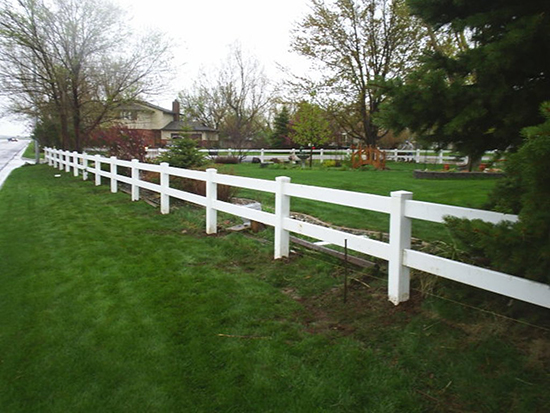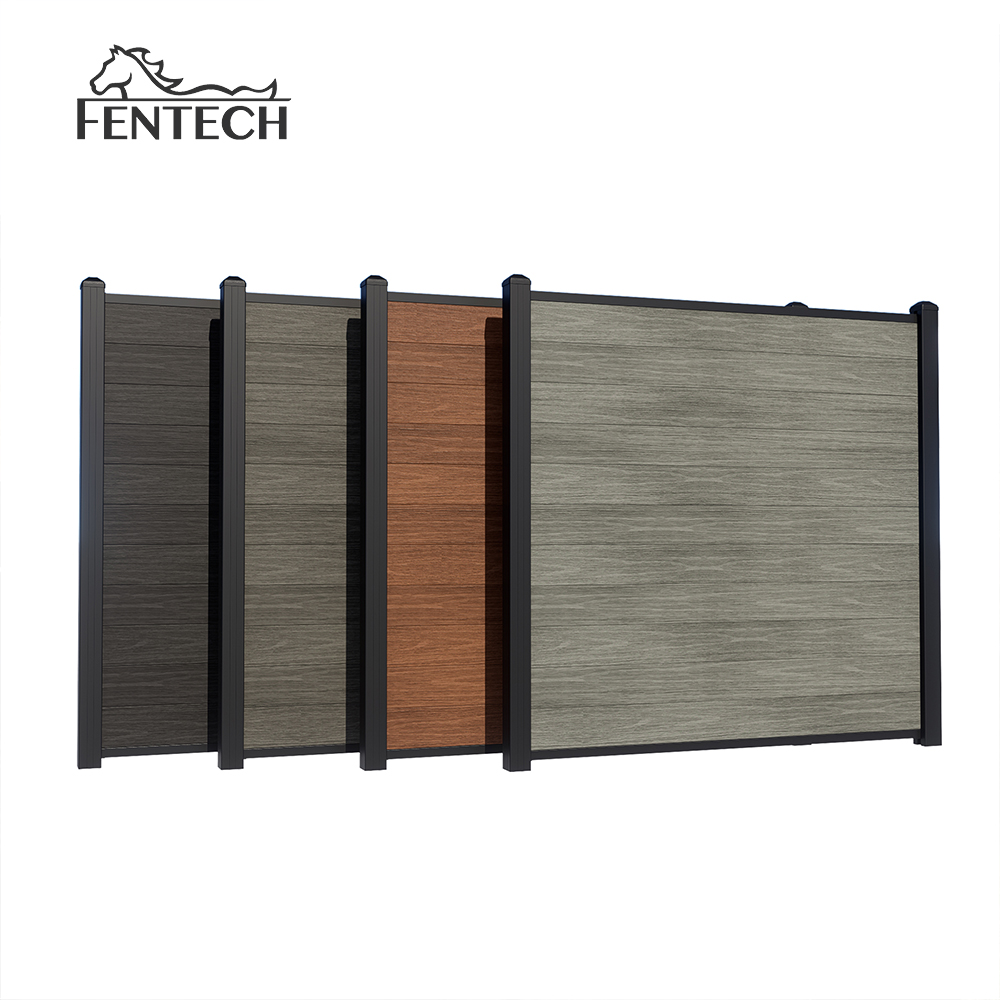We are professional China Custom Vinyl Fence Manufacturers with fences virgin PVC/Vinyl material and UV Protected.
When planning a fencing project for your pasture, one of the first questions that often arises is whether vinyl horse fence can be installed on uneven or sloped terrain. Many properties are not perfectly flat, and those rolling hills or irregular landscapes are part of their natural charm. The good news is — yes, vinyl horse fences can be installed on uneven terrain, but the process requires careful planning, the right installation technique, and a good understanding of how vinyl fencing behaves on slopes.
1. Understanding Vinyl Horse Fencing
Before addressing the terrain issue, it’s worth understanding why vinyl fencing has become a popular choice among horse owners and property managers.
Vinyl horse fences are typically made from high-quality PVC (polyvinyl chloride), designed to mimic the appearance of traditional wooden rail fencing without the maintenance burden. Unlike wood, vinyl doesn’t rot, splinter, or require repainting. It’s also highly resistant to UV radiation and moisture, making it a durable choice for outdoor use.
More importantly, vinyl horse fences are designed for both safety and aesthetics. The smooth, rounded rails minimize injury risks for horses that may rub or lean against the fence, and the uniform color and shape maintain a polished appearance year after year.
However, the flexibility and pre-fabricated design of vinyl fence panels can pose a challenge when installed on irregular terrain. That’s where the right installation technique becomes crucial.
2. The Challenge of Uneven Terrain
No property is perfectly level. Hills, dips, and varying grades can create gaps under fence rails or cause panels to misalign if installed without proper adjustment. Uneven ground introduces two main challenges:
-
Alignment issues – Vinyl rails and posts are designed to fit together snugly. If the ground changes elevation too quickly, those connections can become strained, or the rails may not seat properly.
-
Aesthetic concerns – An improperly installed fence can appear uneven or “wavy,” breaking the visual flow of the line. On horse properties, aesthetics are often just as important as function.
Fortunately, these issues can be resolved through careful planning and by choosing the right installation method for the type of terrain.
3. Two Main Methods: Racking vs. Stepping
When installing vinyl horse fencing on uneven ground, professionals typically rely on two main techniques: racking and stepping. Each method has its strengths depending on the steepness of your slope.
3.1 Racking Method (for Gentle Slopes)
Racking involves adjusting the angle of the rails within the posts so that the entire fence section follows the contour of the land. This method allows the rails to “flow” with the slope, maintaining a consistent gap under the fence.
Vinyl fencing systems are often designed with enough flexibility to allow a certain degree of racking — typically between 10 to 20 degrees depending on the manufacturer. This means they can handle gradual changes in elevation without additional modification.
Advantages of the Racking Method:
- Provides a smooth, continuous look that follows the land’s natural contour.
- Eliminates gaps under the fence that horses could attempt to push through.
- Maintains a professional, clean appearance.
Considerations:
- Only suitable for mild or gradual slopes.
- Excessive racking can stress the rail connections and weaken structural integrity.
- Some vinyl fence styles (like privacy panels) are less flexible and may not rack well.
For most gently rolling pastures, racking is the preferred solution. It’s visually seamless and preserves the natural beauty of your property.
3.2 Stepping Method (for Steeper Terrain)
When the slope becomes too steep for racking, installers use the stepping method. In this approach, each section of fencing is installed level, but each post is set slightly higher or lower than the previous one, creating a “stair-step” pattern that accommodates the change in elevation.
Advantages of the Stepping Method:
- Works effectively on steep or irregular terrain.
- Prevents over-stressing the fence components.
- Ensures each panel remains structurally secure.
Considerations:
- Creates small triangular gaps under the rails where the ground drops away.
- May not appear as smooth or continuous as a racked fence.
- Requires careful post placement to keep the steps consistent.
Many property owners choose to fill the gaps under stepped sections with landscaping material or adjust the soil grade to create a more uniform look.
4. Planning Your Installation
A successful installation begins long before you start digging post holes. Proper planning ensures your vinyl fence not only fits the terrain but also provides years of trouble-free service.
4.1 Survey and Measure the Land
Walk the entire fence line and mark elevation changes. Identify areas where the slope is gradual (suitable for racking) and where it becomes steep (requiring stepping). If possible, use a string line and level to map out grade variations over distance.
This step will help you determine how many panels can be racked versus stepped, and whether additional customization might be needed.
4.2 Choose the Right Fence Design
Not all vinyl horse fences are equally adaptable to uneven ground. Post-and-rail designs are generally the most flexible. Their open structure allows more freedom to adjust rail angles compared to privacy or picket fences.
Common horse fence styles include:
- Two-rail and three-rail fences – Ideal for pastures and paddocks; simple to rack or step.
- Four-rail fences – Offers added containment and visual appeal but may require more adjustment on slopes.
If your terrain varies significantly, choosing a fence model rated for higher degrees of racking will simplify installation.
4.3 Determine Post Spacing and Depth
On uneven terrain, maintaining consistent post spacing is essential for both aesthetics and strength. Generally, posts are spaced 8 feet apart, but in areas where the slope changes rapidly, slightly shorter spacing may provide better control.
Posts should be set deep enough to handle the additional stress caused by grade changes — typically at least one-third of their length underground, and deeper in sandy or soft soil.

5. Step-by-Step Installation Overview
Here’s a simplified overview of the process for installing vinyl horse fencing on uneven terrain:
- Mark your fence line – Use stakes and string to establish a clear path. Follow the natural contour of the land as closely as possible.
- Dig post holes – Adjust the depth slightly as needed to maintain level rail alignment in each section.
- Set corner and end posts first – Ensure they are perfectly plumb and serve as anchors for the rest of the line.
- Install line posts – Depending on your slope, set posts progressively higher or lower (stepping) or adjust angles slightly (racking).
- Insert rails – For racked sections, slide rails into post holes at an angle. For stepped sections, ensure each set of rails remains level.
- Secure and cap posts – Once the rails are properly fitted, cap each post and check for alignment along the entire run.
Throughout installation, check for consistent spacing, smooth transitions between sections, and adequate ground clearance.
6. Dealing with Gaps and Uneven Ground Contact
One of the most common concerns when installing on uneven terrain is the presence of gaps under the rails. While vinyl fencing should not be buried or forced against the soil (to avoid moisture damage and pressure warping), there are several ways to manage these spaces:
- Backfill low areas with soil or gravel to close the gap without stressing the rails.
- Add mesh or electric wire along the bottom for extra containment if small animals are a concern.
- Use landscaping such as low shrubs or mulch beds to create a visually cohesive boundary.
The key is to strike a balance between aesthetic appeal and functionality without compromising the fence’s structure.
7. Maintenance and Longevity on Uneven Ground
Vinyl fences require minimal upkeep, but uneven terrain can expose certain sections to additional stress or weathering. To ensure long-term performance:
- Inspect posts regularly — Ground movement or erosion can loosen them over time.
- Check for shifting rails — On slopes, gravity may cause slight slippage; reseat rails as needed.
- Monitor soil erosion — Especially on steeper grades, water runoff can wash away soil around posts, reducing stability.
- Clean periodically — Dirt, algae, and mildew can accumulate faster in shaded or low-lying areas.
With occasional maintenance, a high-quality vinyl horse fence can last 20–30 years or more, even on uneven terrain.
8. When to Call a Professional
While many property owners successfully install vinyl fencing themselves, uneven terrain adds a level of complexity that often benefits from professional expertise. Experienced installers have the tools and techniques to measure slope gradients accurately, adjust post depth, and maintain consistent alignment across varying elevations.
If your property includes steep hills, irregular soil conditions, or drainage challenges, professional installation ensures your investment is properly secured — both structurally and visually.
9. Final Thoughts
Installing a vinyl horse fence on uneven terrain isn’t just possible — it’s a practical and rewarding project when done correctly. Whether your property features gentle rolling hills or sharp elevation changes, vinyl fencing offers the versatility to adapt while maintaining its strength, safety, and clean appearance.
The key lies in understanding your land, choosing the right installation method, and paying attention to detail during setup. With proper planning and execution, you’ll enjoy a durable, low-maintenance fence that enhances both the functionality and beauty of your property for decades to come.
In short, yes — vinyl horse fences can be installed on uneven terrain. And with the right approach, they can look just as seamless and elegant as they do on level ground.
 English
English  中文简体
中文简体
























